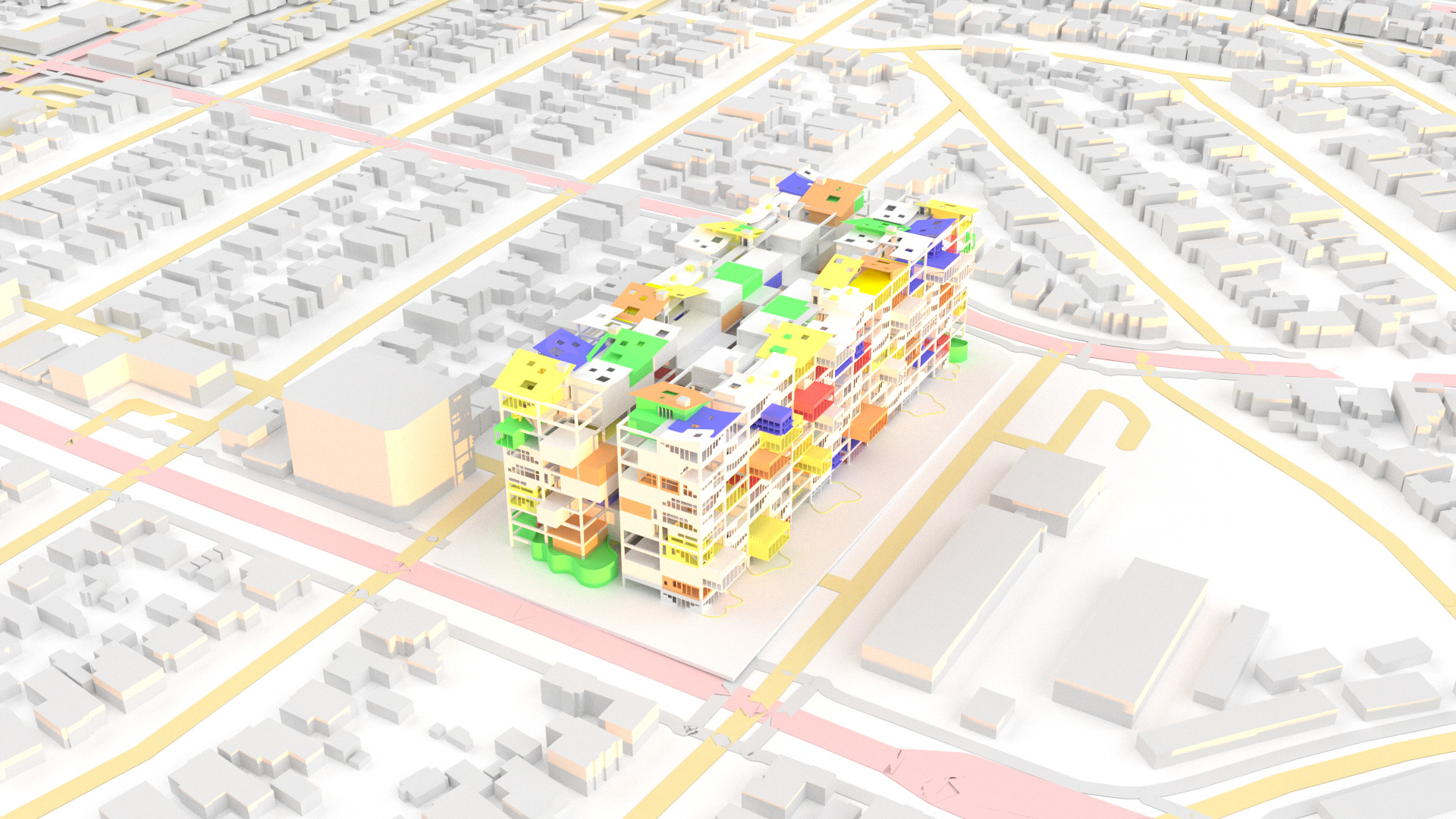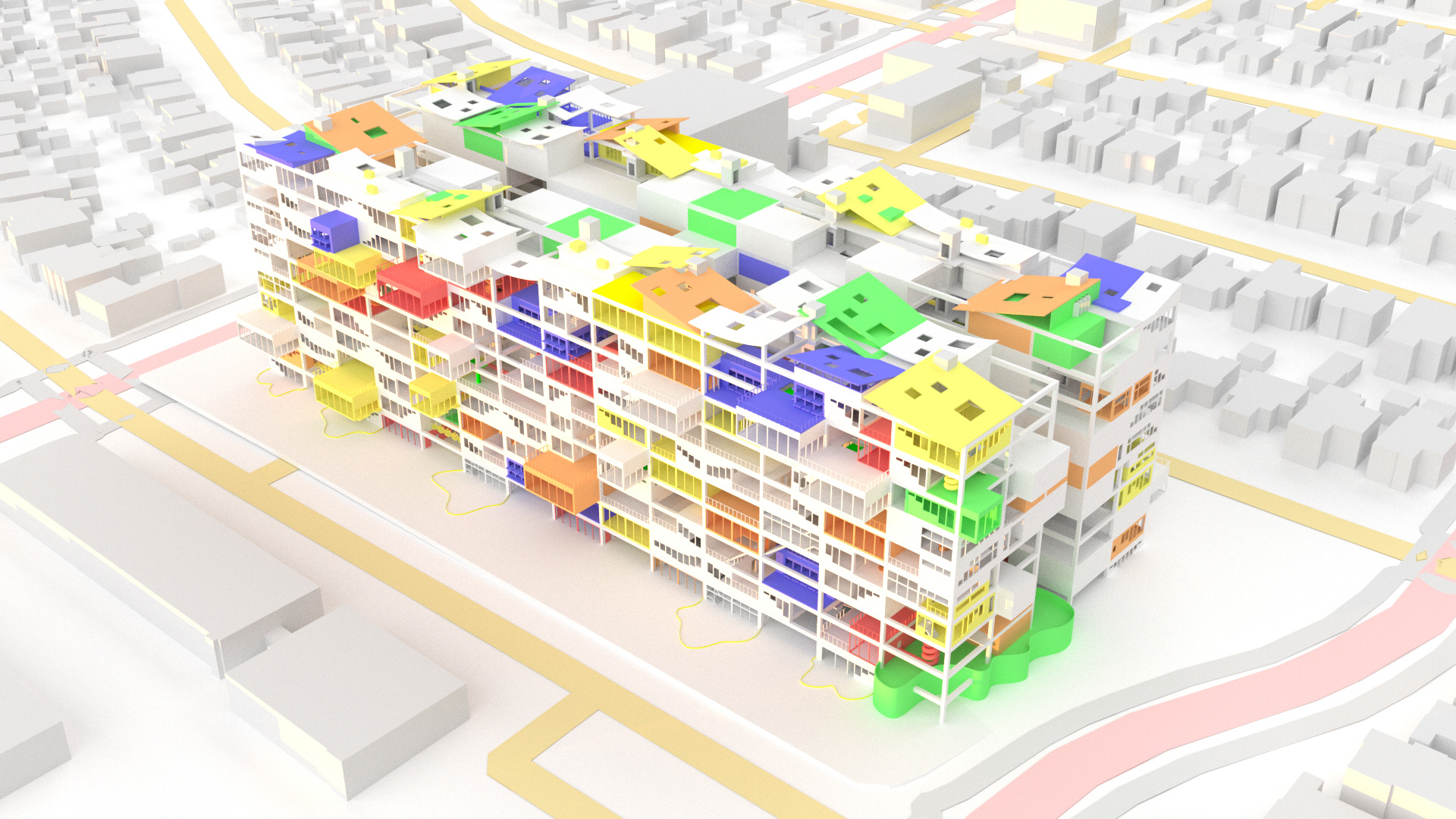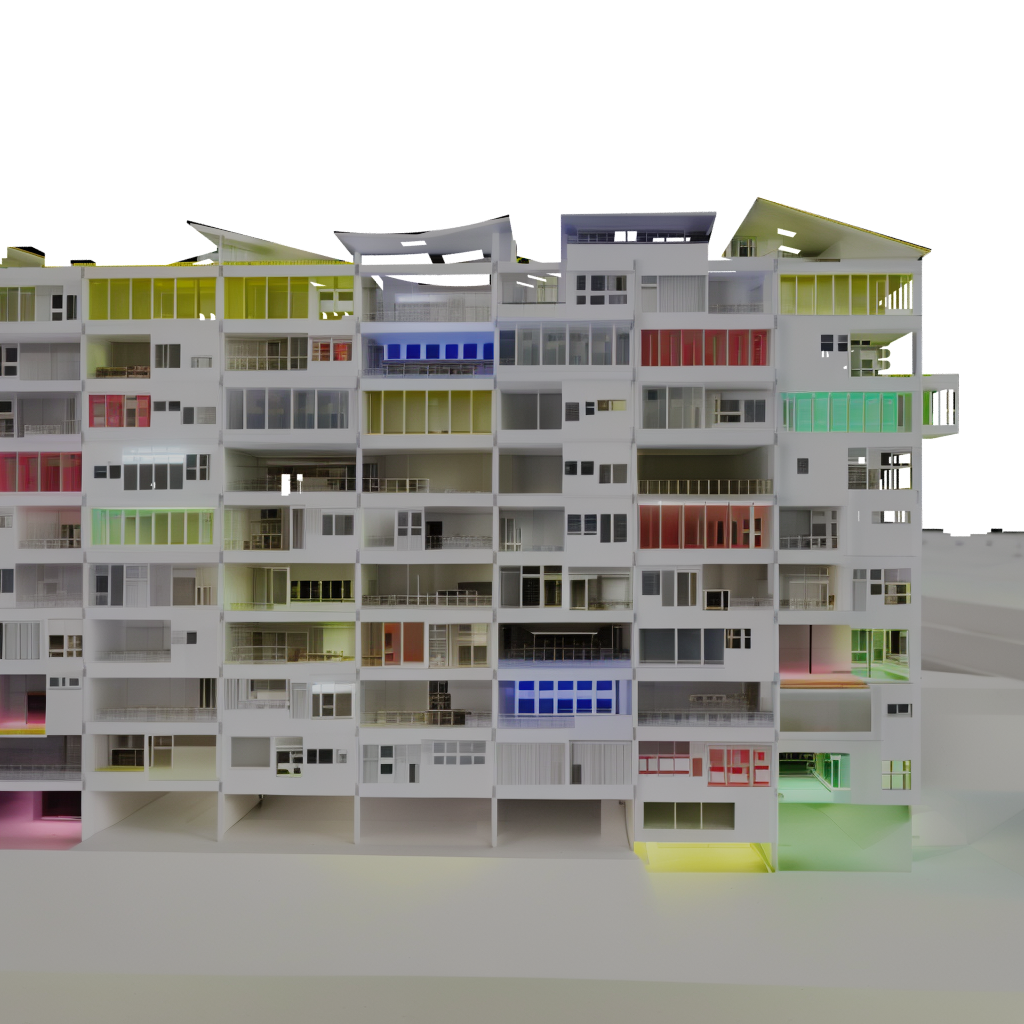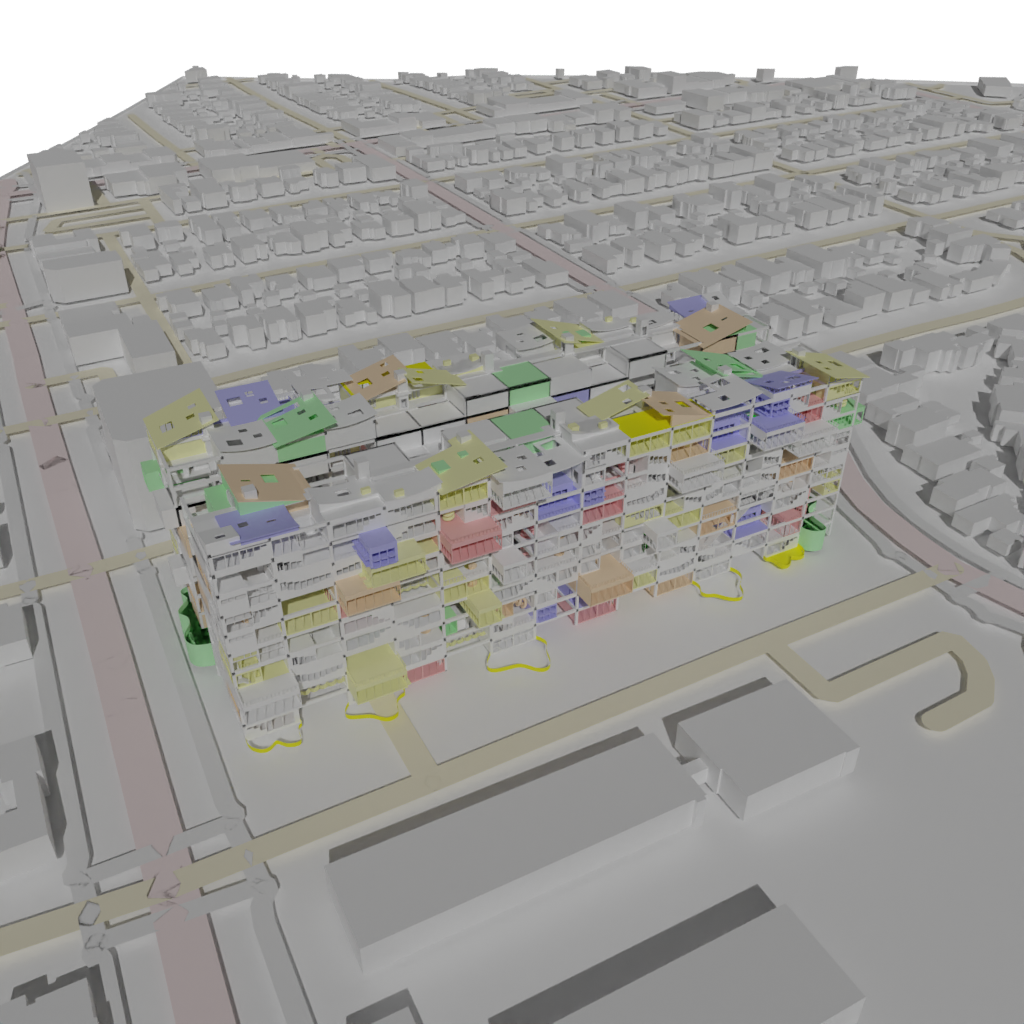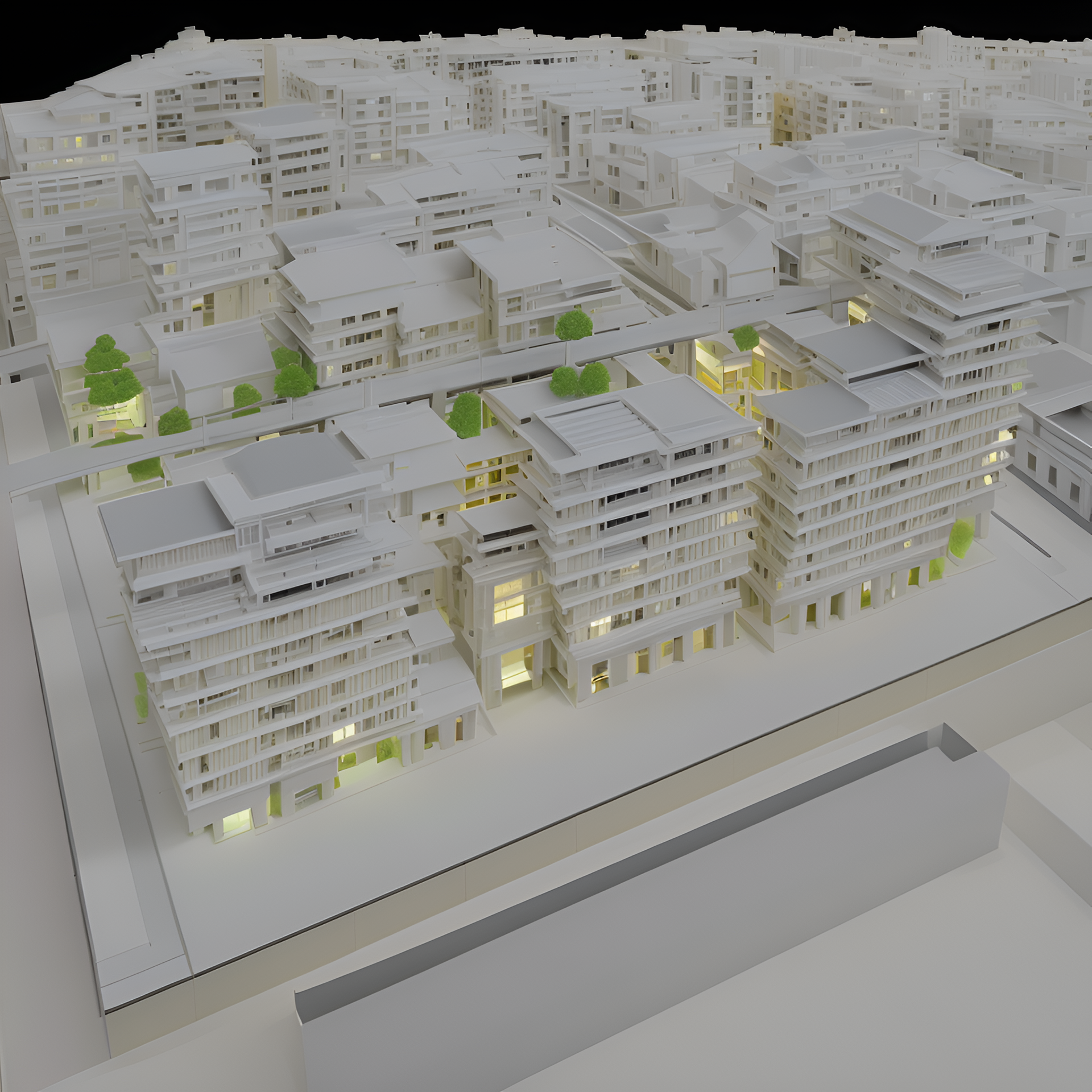"From a person to a community, Plan B housing unites and uplifts."
(Project working in the process, 2023)
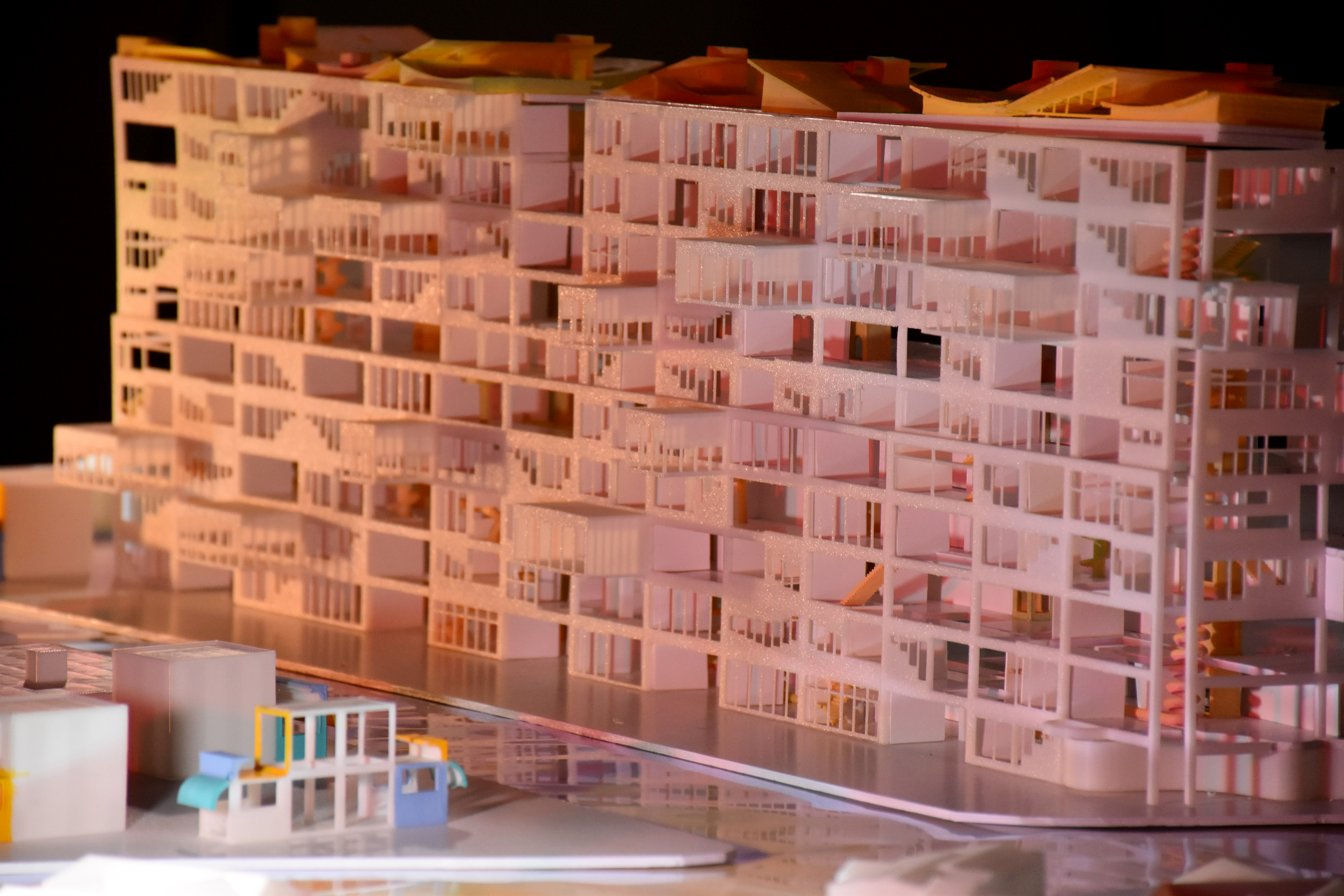
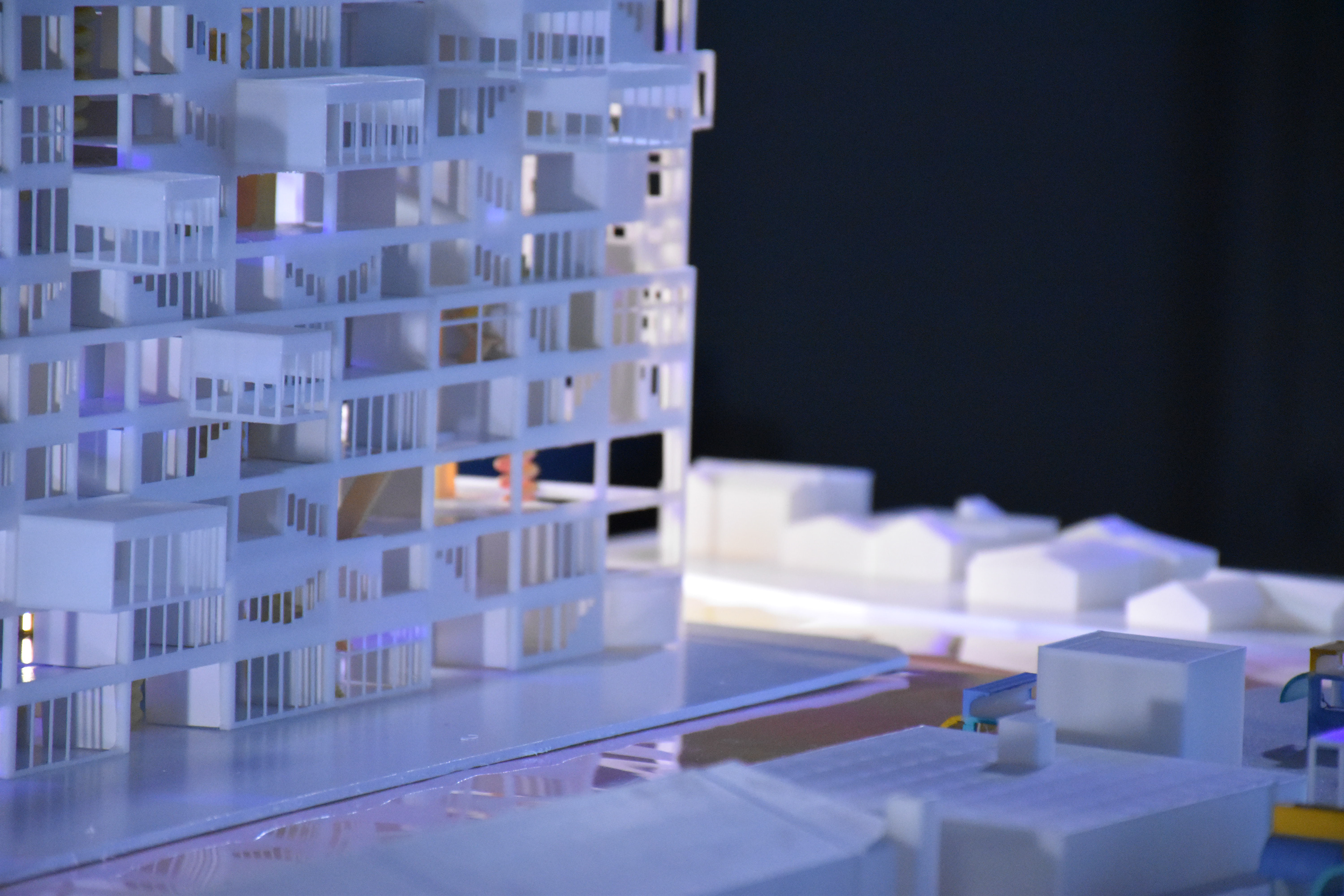
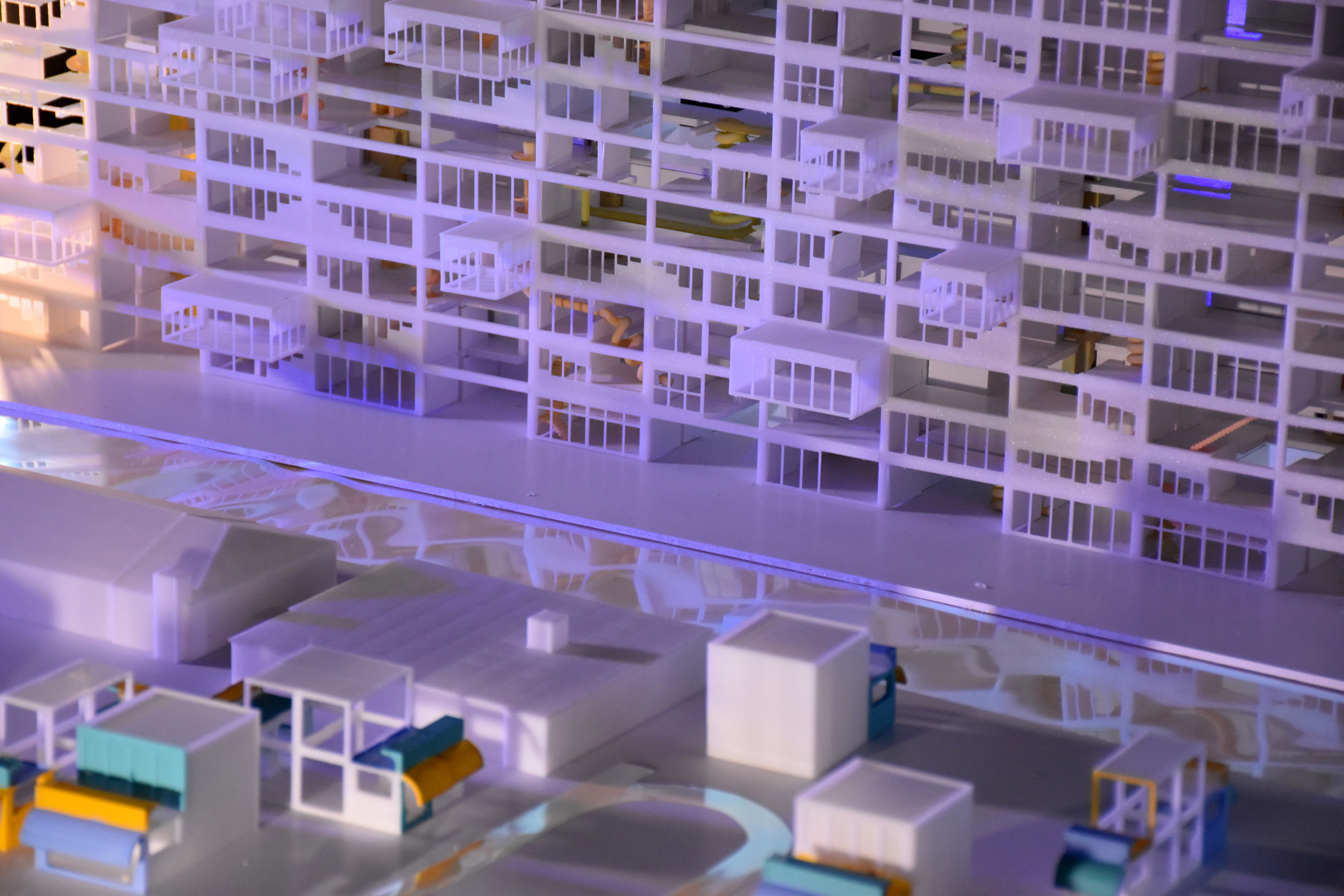

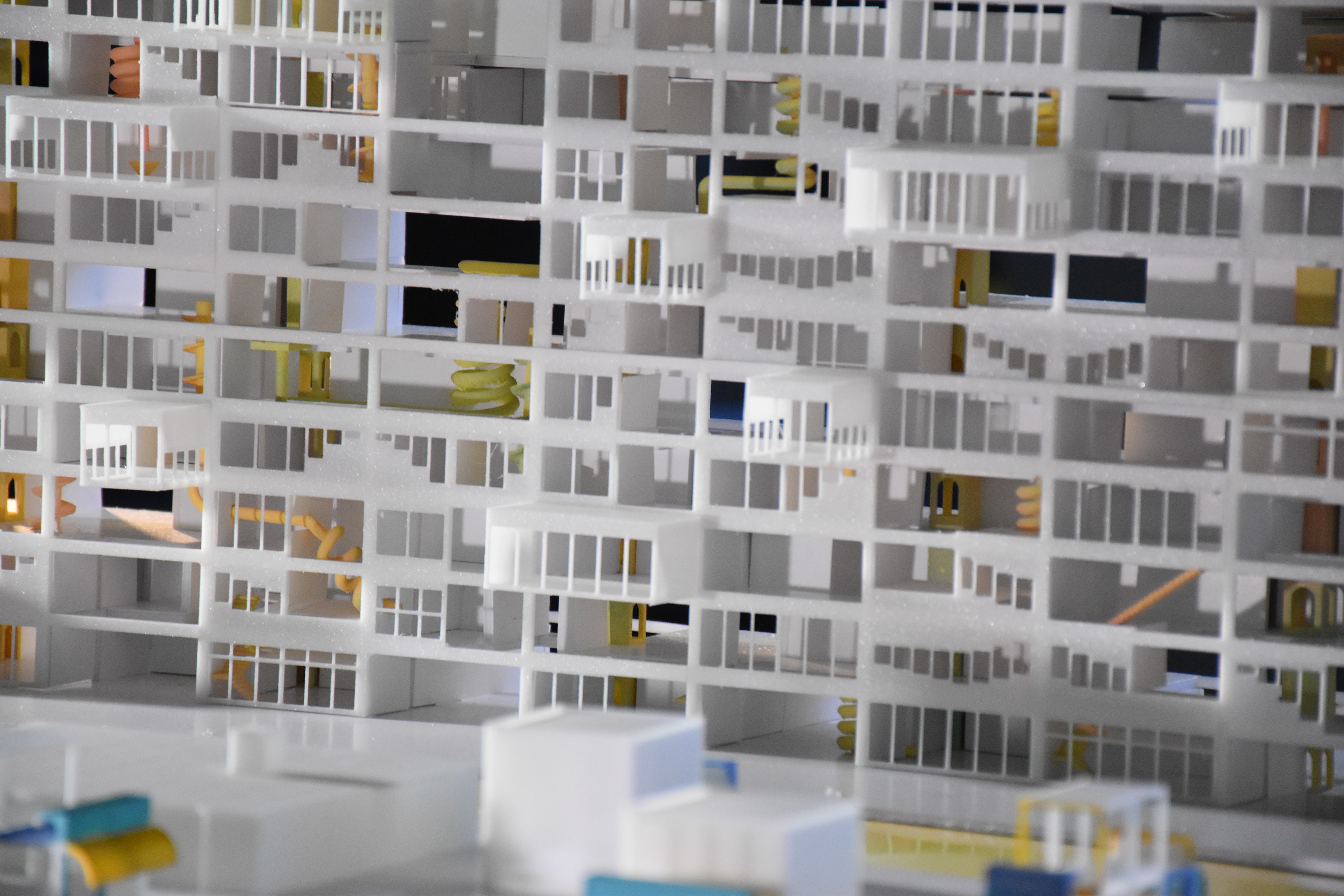

Narrative
The industrial housing collection in Plan B is a new approach to housing design that aims to provide affordable and flexible housing options for individuals and families in Los Angeles. The collection incorporates industrialized construction methods, allowing for efficient and cost-effective production of customizable housing units. The movable walls and add-on architectural elements, such as balconies, stairs, and elevators, allow for easy customization to meet changing needs and lifestyles.
Designed for people with different lifestyle preferences and household sizes, the housing collection is located in various LA areas, including urban and suburban environments. The collection's innovative approach to housing design could potentially reduce urban sprawl by promoting higher-density living in urban areas, resulting in increased accessibility to public transportation and community resources. The business model for the industrial housing collection includes selling or renting the housing units, with customization options and additional services available for an extra fee. Private developers may cover the costs of designing and constructing the housing units, but government initiatives can also support it to address affordable housing needs. Additionally, the movable architectural elements of housing could be one-time sales to residents, creating an additional revenue stream. Overall, the industrial housing collection in Plan B is a forward-thinking solution to the affordable housing crisis in Los Angeles. Its industrialized construction methods, customization options, and movable architectural elements make it a flexible and adaptable housing solution that can meet the changing needs of its residents over time.
#Blender #Unity #Rhino #UE5 #World #LA #2050
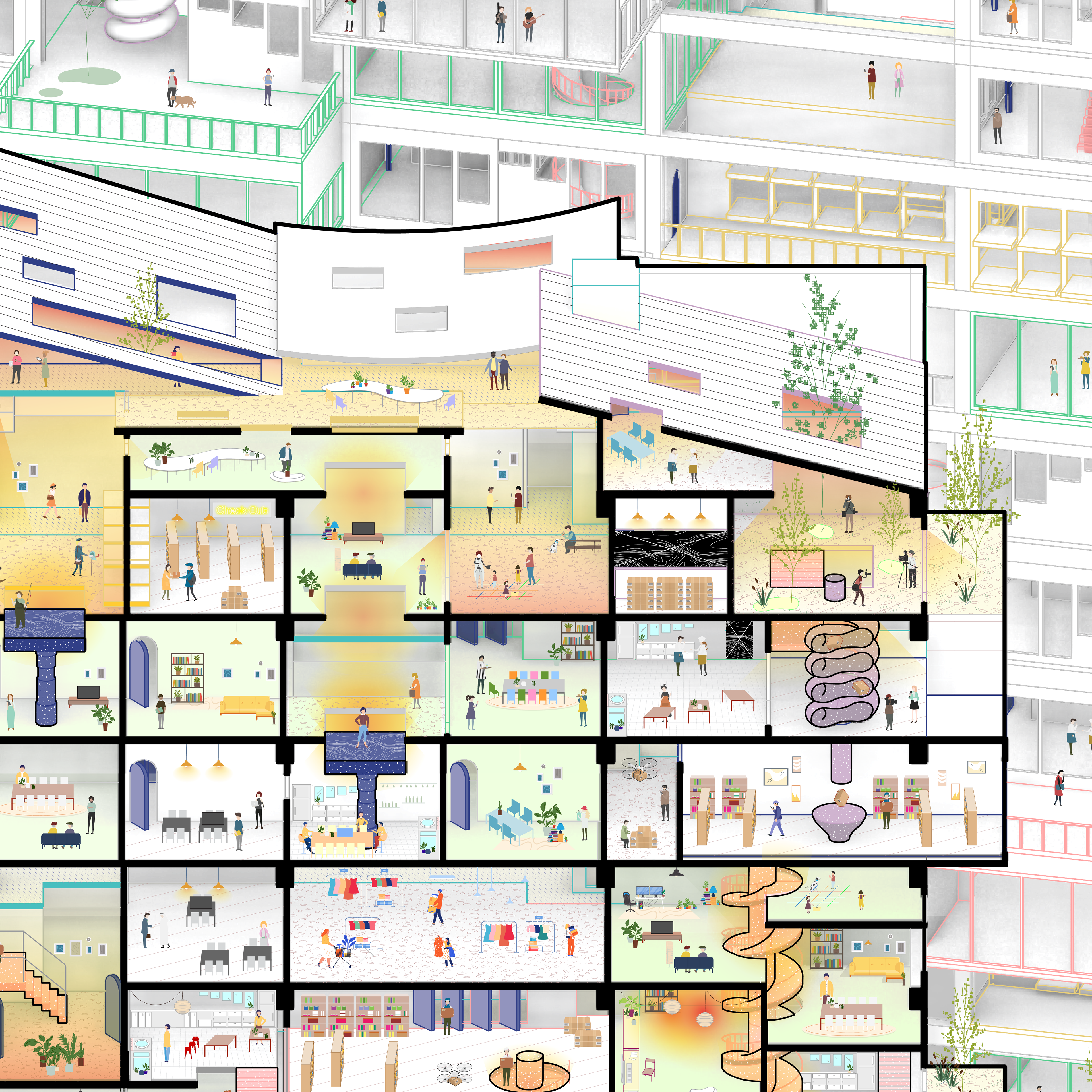
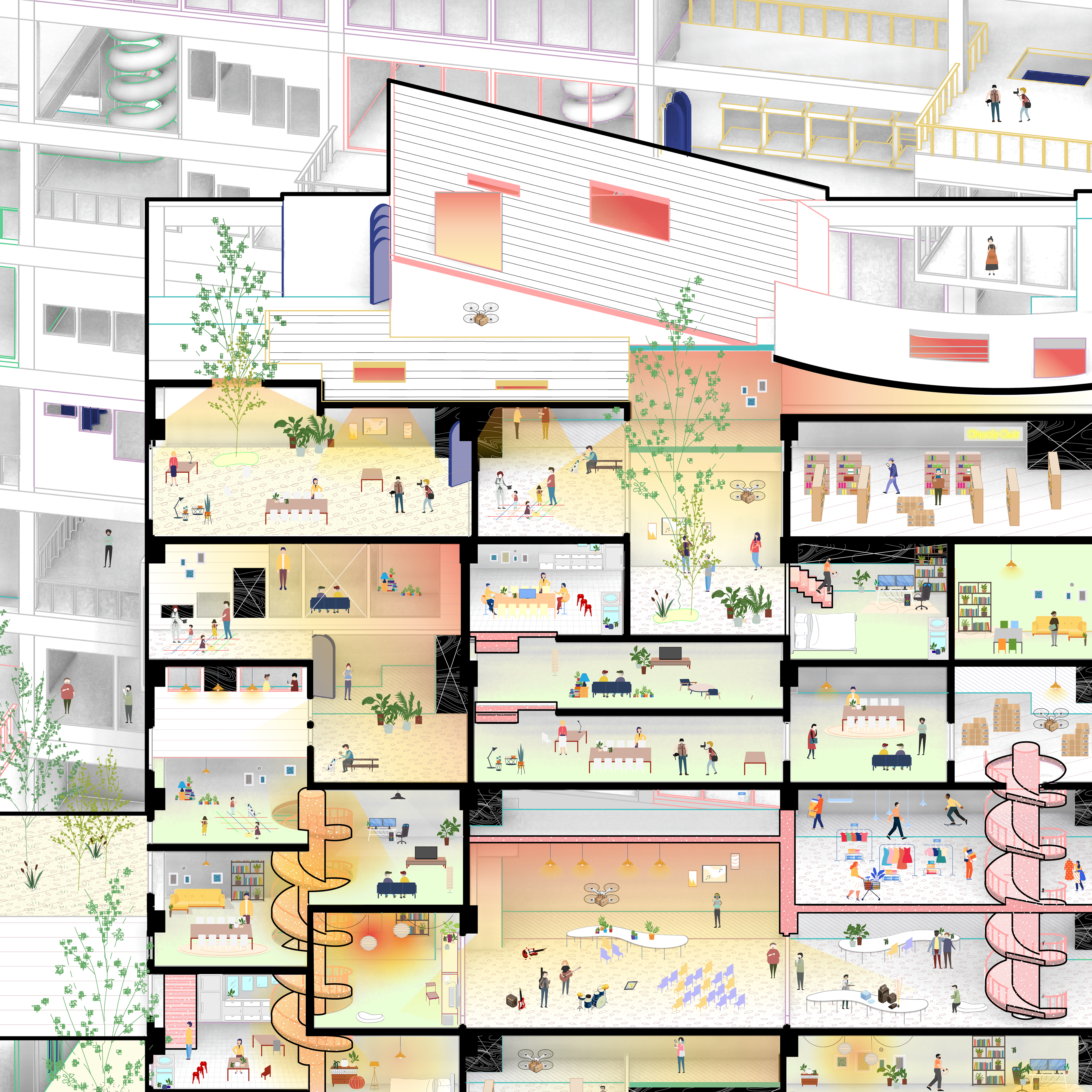
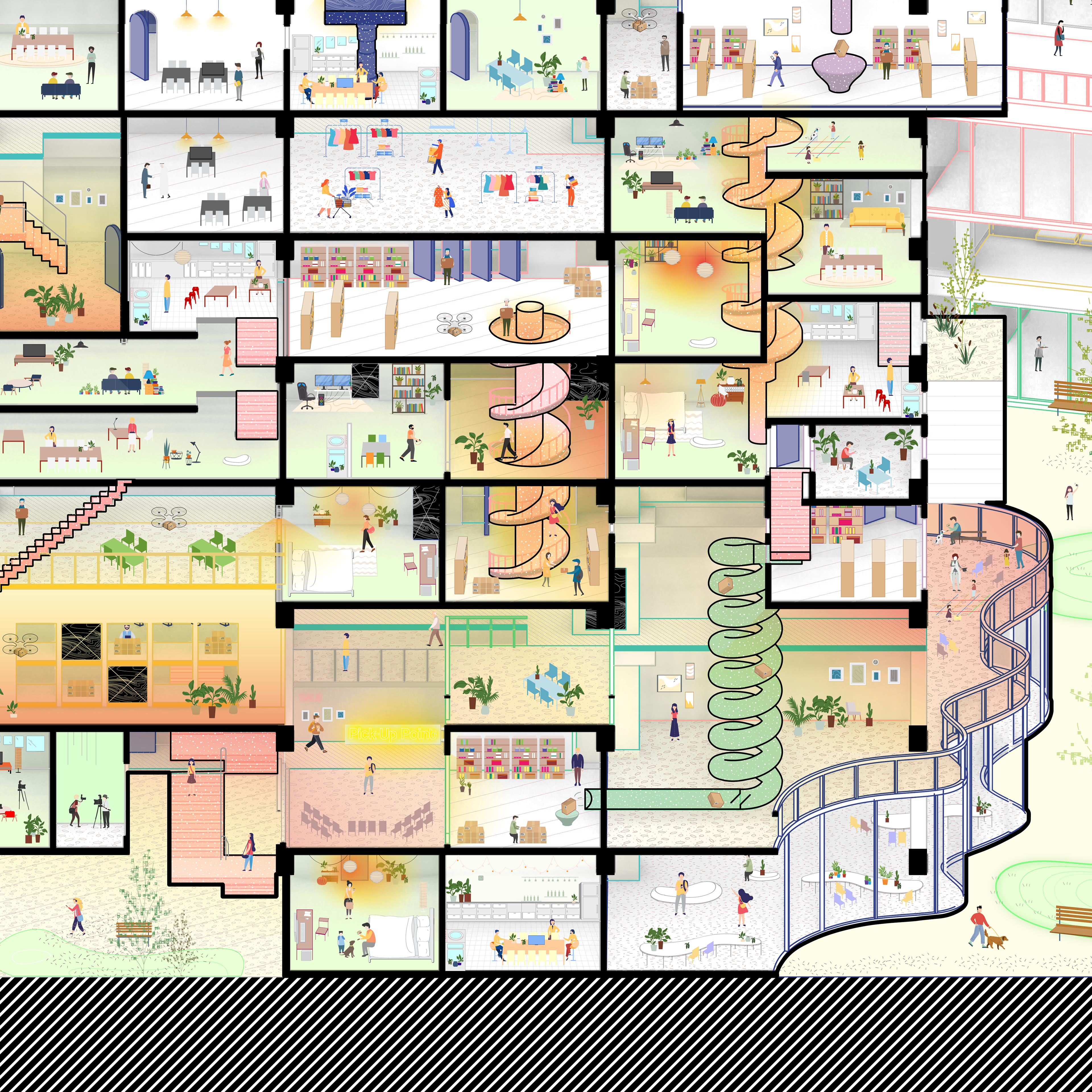
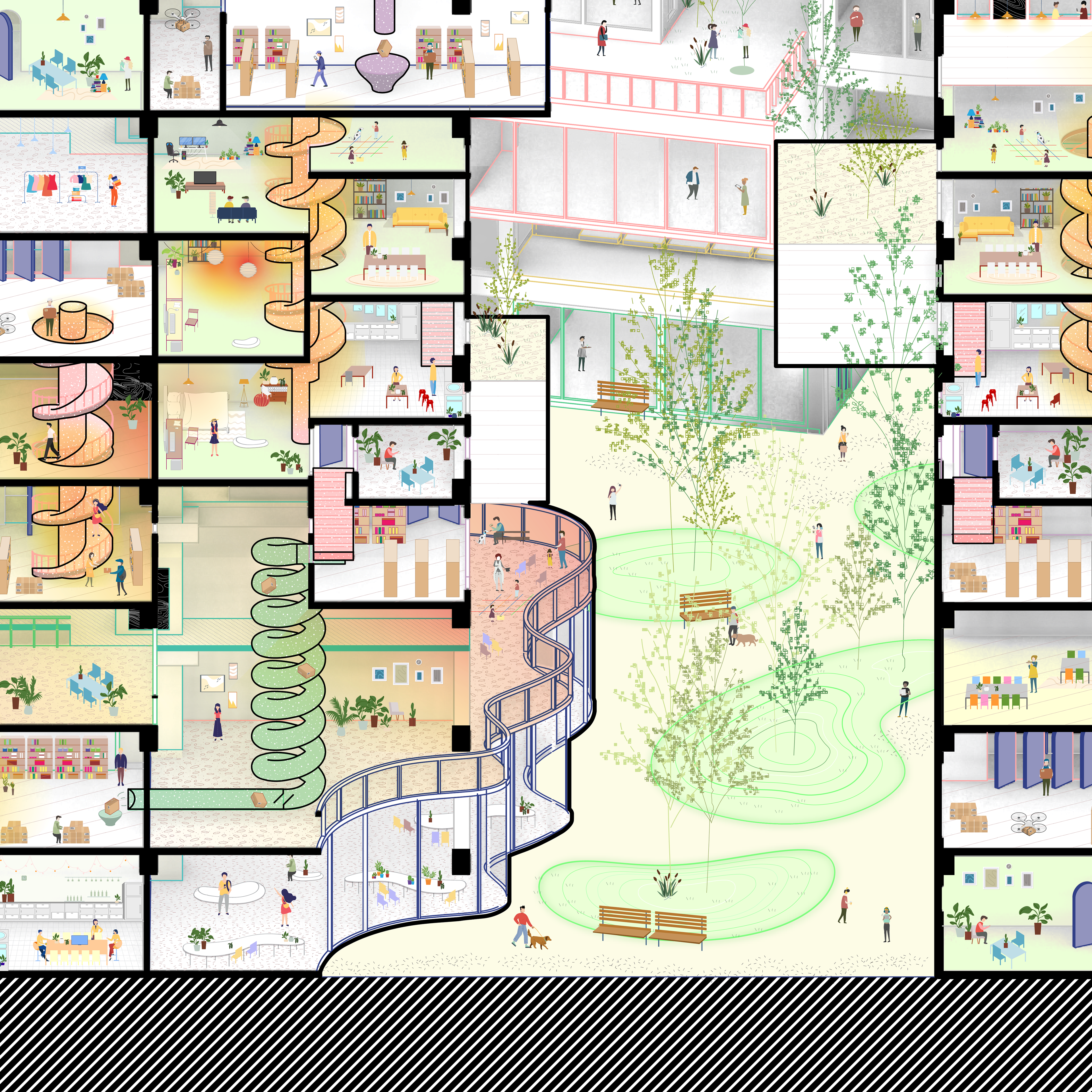
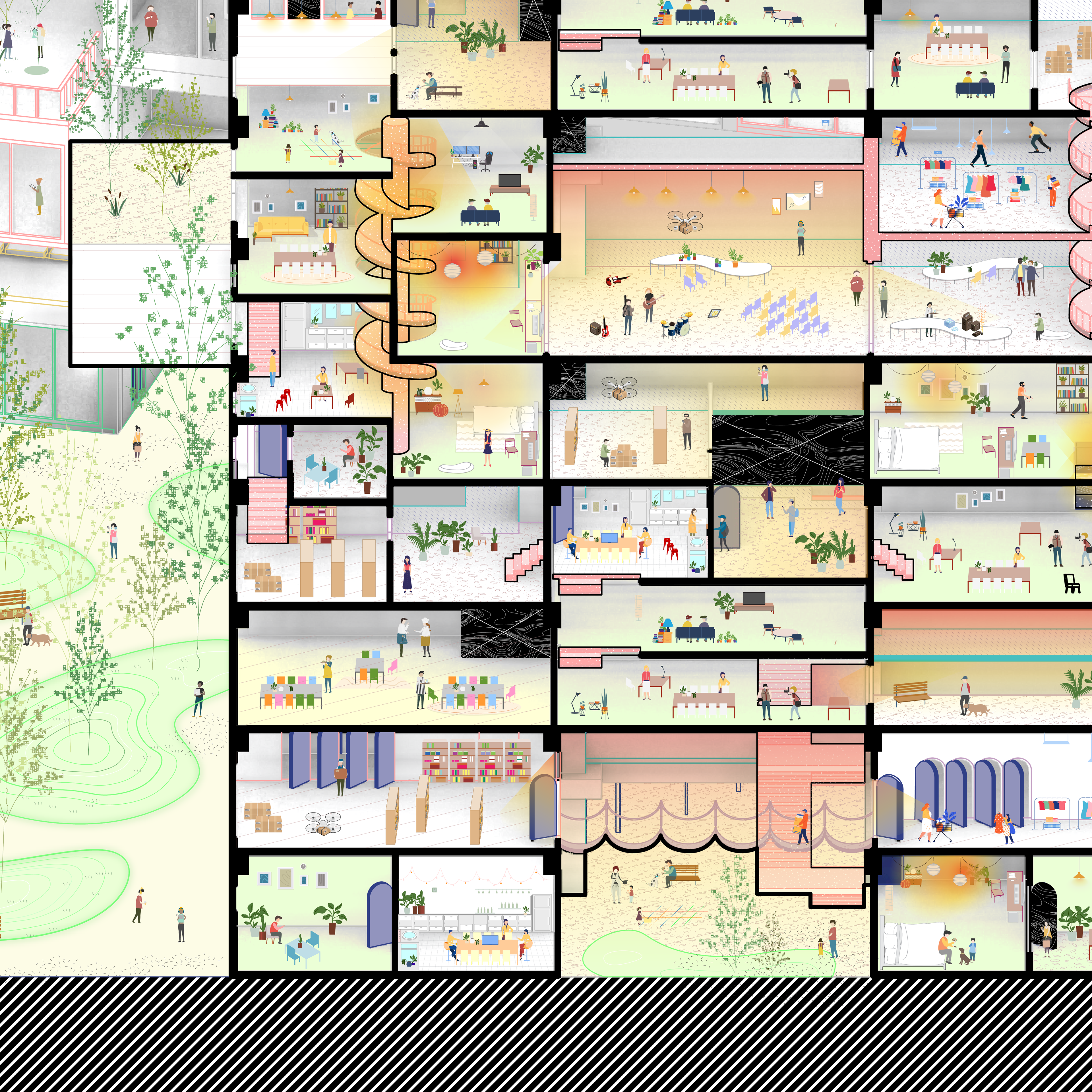
In the 20th century, three prototypical housing types defined Los Angeles: Dingbat, Tract, and Bungalow. However, in 2050, these types will no longer satisfy living demands as flooding becomes a daily occurrence.
In this future, where the government exercises significant control over resources in society, how can individuals maintain a balance between industrialization and customization to evolve the prototypical housing culture in Los Angeles? How will the residential areas adapt to the shifting cityscape with divided programs and the distribution of products among communities and commercial districts? Facing these challenges, the concept of "customized" emerges as a new approach within industry standards, empowering citizens to adapt to flooding.
This project, The Industrial Housing Collection, is located in the earliest tract housing district in Los Angeles and aims to provide a simple living program. Efficient distribution of resources and products to reduce waste is no longer an option but a direct approach to living. The mixed-use industrial housing collection creates opportunities for efficiency and individuality.
This project aims to make everything fit and adapt to multiple functions and circulation while retaining industrialized copy-and-paste construction and providing customization services. This new approach reconsiders how we think about housing, communities, customization, and delivery logistics in the future.
By establishing standards and ensuring uniformity in housing, with a width of 12 meters, it allows for the adoption of a 12 by 12 meters square for easier replication and contrasts with the conventional rectangle. This module is repeated for at least eight floors to accommodate residents moving from the flooding district, including additional non-residential programs. The elevation is white to reflect sunlight in different seasons and weather conditions. The number of units corresponds to the size of the site, with the street, neighborhood, or entrance reflecting the site's contours. The irregular spaces assume the role of main lobbies or management offices. The second aspect revolves around the system of industrial housing. Individuals can choose from various customizable architectural elements, such as circulation, including stairs, slopes, slides, and windows. Units can select their elements based on spatial privacy needs, changing inhabitants, and circulation patterns. Lastly, commercial programs, such as marketplaces, goods customization studios, and trading spaces, provide alternative outposts to historic retail commercial programs that solely focus on buying and selling behaviors. These new spaces support product delivery, fixing, customizing, and reselling, bridging different programs.
Completing the Industrial Housing Collection in Plan B marks a transformation in Los Angeles. The city's landscape has been reshaped, blending standardized dimensions with unique configurations. The distinctive shapes of these homes serve as landmarks, guiding residents and visitors alike. The project is an experiment to implement a strategy on standards, adjustable unit modules, architectural elements, and a custom circulation system, allowing residents to personalize their movements. Overall, it embodies a future where the power of industry and the essence of personalized living coexist, adapting to the dynamic world in 2050.
